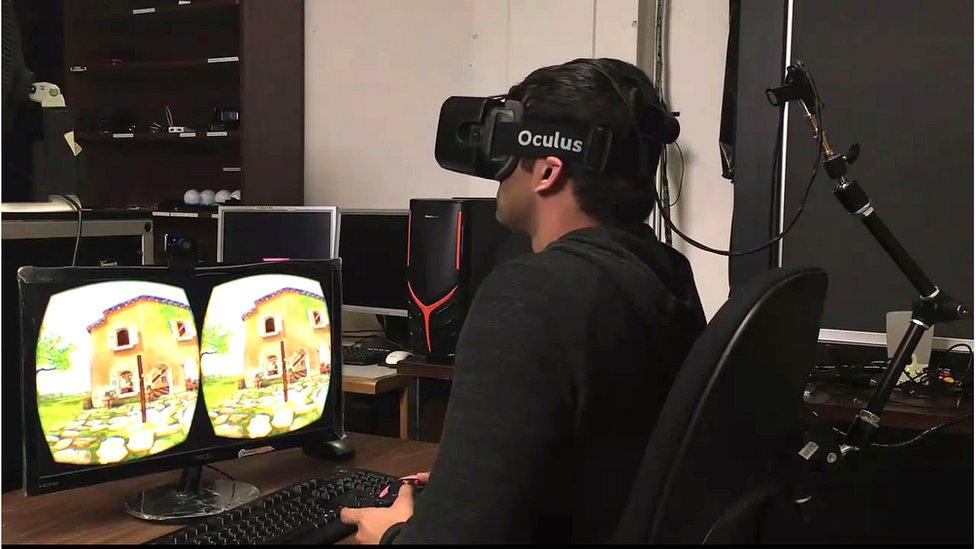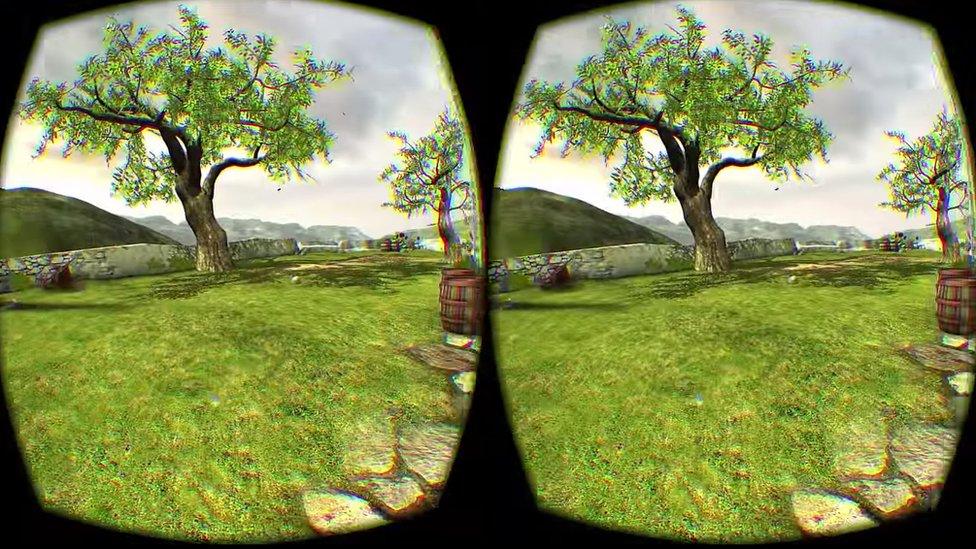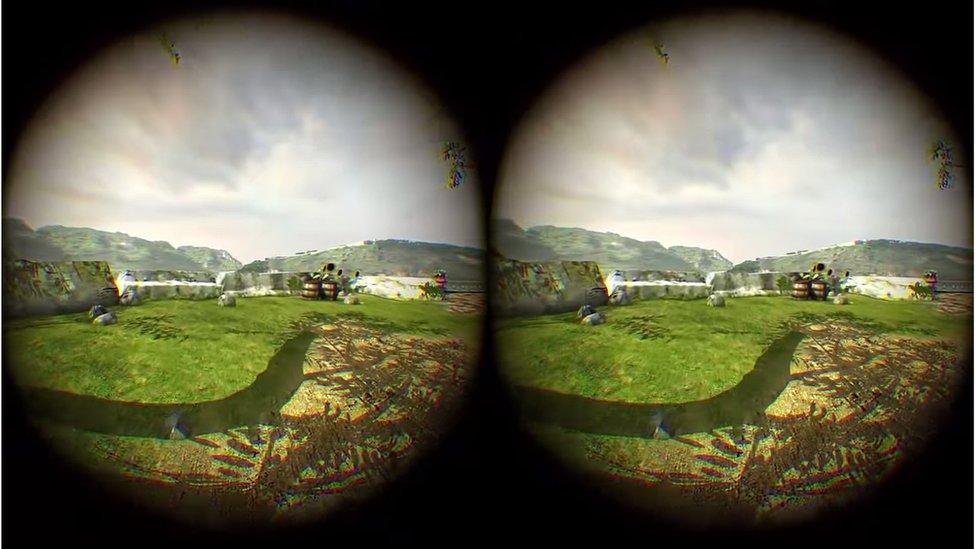Virtual reality sickness 'tackled with field of view trick'
- Published

Virtual reality sickness can make using a headset, even for a few minutes, nauseating
Virtual reality-induced nausea can be reduced with a simple field of view alteration, Columbia University researchers have said.
They found that, when a user's field of view was restricted when moving in a virtual environment, they were happier to stay in VR for longer.
Some find VR uncomfortable as there is a sensory mismatch between what users see and where they are in reality.
One specialist said the research seemed "simple and efficient".
The technique, which was trialled by 30 volunteers, external during two sessions, involves subtly narrowing the field of view presented by a VR headset.
The narrowing increases as a user moves through the virtual world, but relaxes again when they come to a stop.
Cyber squeamish
Steven Feiner, a professor of computer science at Columbia University, has suffered from VR sickness himself.
Symptoms such as nausea are caused when the brain receives visual cues that clash with sensory information received from the ears' vestibular system, which aids balance.
The system comprises several small canals in which tiny amounts of fluid act like spirit levels, responding to the body's motion.
Prof Feiner explained that VR has the potential to "profoundly change" how people interact with machinery, information and other human beings.
"It is critical that the experience be both comfortable and compelling, and we think we've found a way," he said.

The field of view remains unrestricted while users are stationary...

...and gradually becomes obscured as they move.
Prof Feiner and his co-author, Ajoy Fernandes, produced a video demonstrating, external how the technique works.
Although the field of view changes appear stark on a desktop computer monitor, they were rarely noticed by users in the trial - their eyes having been much closer to the headset screen.
Restricting the field of view to combat motion sickness has, separately, been tried by Ubisoft in their VR title Eagle Flight, external, said Prof Anthony Steed at UCL.
"The technique is generally useful across a range of applications, so it should have broad impact," he added.
And it appeared more straight-forward than some previous efforts to tackle the problem, according to Sebastien Kuntz, founder of French VR firm MiddleVR.
"Actually, I'm super sensitive [to virtual reality sickness] myself, so every time we develop something here I test it," he told the BBC.
"This idea seems simple and efficient - I definitely want to try it."
The work was also welcomed by Jay Short at digital studio Inition in London, which has developed a range of virtual reality experiences for companies.
He said some of Inition's clients were apprehensive about VR because they feared some of their audience would have a nausea-inducing experience that could be "incredibly damaging" to the brand.
- Published6 January 2016

- Published5 May 2016
- Published18 June 2015
